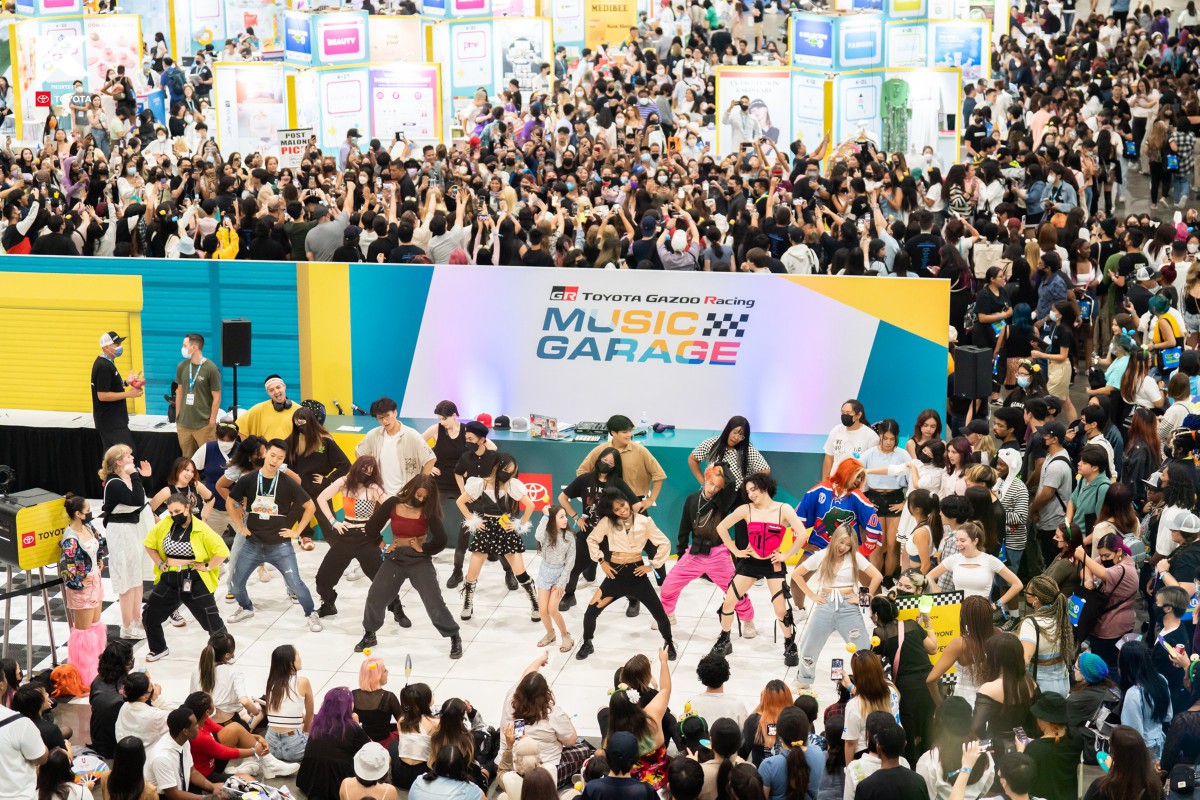[Co-production with STO]
Impact of K-pop and Its Fans

ㆍK-pop's endless release of new and upcoming artists following Gangnam Style
ㆍGlobal fans work as driving force of tourism despite COVID impact
ㆍMid-to-long-term development initiative needed amid K-pop's anticipated yearly economic return worth trillions of won that the Sustainability of Seoul as a global MICE destination depends on K-pop and fans
In August 2022 when the world was still under the impact of COVID-19, a festival which brought all audiences together regardless of their races and nationalities was held in LA Convention Center and Crypto.com Arena in the US. Although travel restrictions in some countries remain in position, the festival saw almost 90,000 visitors. Furthermore, it was joined by 7.08 million viewers from 176 countries online. During the three-day run of the festival, a myriad of articles vividly describing the excitement and vigor of visitors were published by nearly 100 media outlets around the world in real time.
It was “KCON 2022 LA,” a K-pop festival hosted by CJ ENM. The fact that it was held in person after three-year hiatus was enough to raise the expectations of K-pop fans and the organizers tried to live up to these expectations with various experience programs.
A K-pop frenzy even COVID-19 could not stop is expected to continue this year. This year K-pop mega band BTS marks their 10th anniversary and a trickle-down effect of K-pop and K-culture to tourism and MICE industries driven by travel reopening and normalization is anticipated.


K-pop, an abbreviation of Korean Popular Music, refers to Korea’s popular music in general. The term started to be used in 1990s, but recently it has become a proper noun meaning a cultural phenomenon that idol group’s performance and music are combined with global fandoms. Even make-up style and fashion, seemingly unrelated to music, are included in K-pop. As K-pop becomes globalized, popular music affected by the Korean culture or in a Korean style is considered to be part of K-pop even though it is not sung by a Korean singer or written in Korean.
Attracting the largest scale of global fans in the history of K-pop, BTS is regarded as a boy band who has completely overhauled the K-pop market for 9 years since their debut in 2009. According to the analysis of Hana Institute of Finance conducted in last June when BTS announced its temporary hiatus of group activity, the economic impact of BTS clearly shows that K-pop has now grown to an independent industry. The analysis found that during the hiatus annual sales of BTS-related products are expected to decrease by 750 billion won (500 billion won of albums and tours and 250 billion won of relative merchandise).
There is another research result showing that one-year activity of BTS will bring about 4 trillion won of the average annual economic impact in domestic production (tourism, distribution, art, etc.) According to a recent article of Chosun Ilbo, a 1% increase in BTS’ popularity will lead to a 0.45% growth of inbound travelers after 3 months, and the average annual number of foreign travelers who visit Korea due to K-pop reaches 796,000. This is why it is not an overstatement to say that K-pop is driving the trade and tourism industries going beyond the music industry.
“YouTube views” are another significant factor showing global popularity of K-pop. As of June, PSY’s Gangnam Style (4.8 billion accumulated views), Blackpink’s Ddu-du Ddu-du (2 billion accumulated views) and BTS’ Boy with Luv (1.6 billion accumulated views) are firmly securing their positions in YouTube’s Billion View Club, and Baby Shark Dance of Pink Pong which set the Guinness World Record for the most viewed video on YouTube has recently surpassed 12.9 billion views. All these achievements would not be possible without unique and attractive melody of K-pop songs and cool performance of artists which fascinate international fans.

Fandom is what makes K-pop work as an independent industry in a coordinated way. Korea Foundation announced that K-pop fandoms annually create more than 8 trillion won of economic effect (as of 2020). Lee Yoon-kyeong, a researcher of Korea Foundation, said that fandoms of K-pop artists are not merely supporters of their stars, but they are evolving themselves to Fan+Consumer and Fan+Innovator who set a new business model. Core fandoms mainly consisting of youngsters, such as college students and the professions, are willing to purchase the products which K-pop artists advert and visit cities, places, restaurants and cafes connected to K-pop stars.
Some analyses argue that K-pop and fandoms would have a significant impact on “tourist behavioral intention” of foreign visitors. Tourist behavioral intention means the possibility that people turn the image or idea of a certain tourist spot they had into real action, which is travel in this context. In this regard, the result of “2021 potential inbound traveler research” conducted by Ministry of Culture, Sports and Tourism and Korea Tourism Organization which surveyed 30,000 men and women aged over 15 residing in top 21 countries by inbound arrivals to Korea is highly timely and relevant.
According to the survey, 15.1% of respondents answered that they want to visit Korea because there are many cultural and experience programs they can enjoy (related to K-pop and Hallyu, or the Korean Wave). The impact of previous experience in Korean culture to the willingness to visit Korea was much higher among those who are willing to visit Korea (76.2 points) than those who are not (52.2 points). K-pop has elevated Korea’s image to “the country where tourists are willing to visit and, furthermore, must visit.”
Last year it was very common to see that those who visited Seoul to participate in international conferences arrived before the event started and took a short trip in Korea while trying some Korean food, going sightseeing and sending photos and videos to their family. Some people even brought a long to-do list which is mainly affected by K-pop and K-drama.

The focus of tourism and MICE policies of Seoul has been shifted in order to reflect the needs of domestic and international K-pop fans. Seoul Convention Bureau (SCB) has recently held various events related to Hallyu contents in IMEX Frankfurt, such as Chimaek Festa, Squid Game event and Ppopgi (dalgona candy) game, attracting visitors across the world. Backed by enthusiastic support and active participation from audiences and buyers, SCB is planning to organize similar events in upcoming ITB Asia and IMEX America.
A recent upsurge of incentive tours held in Seoul is displaying how influential and impactful K-pop and K-culture have become. According to SCB, the number of incentive tours supported by SCB was only four last year, but it soared to 131 in the first half of this year. A SCB official said that global interest in Hallyu has recently expanded to Seoul which is backed by the fact that the number of incentive tours held in Seoul skyrocketed.
Article by reporter Choi Seong-wook
